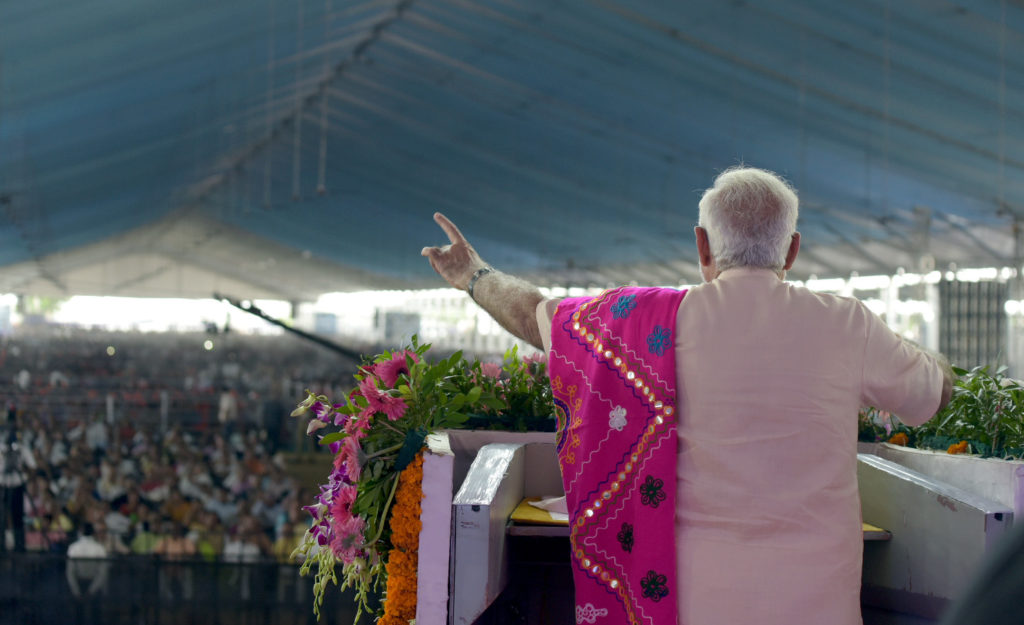Scripting a second successful run
Eyeing a second term, the ruling Bharatiya Janata Party has begun to script its strategy for the 2019 General Elections in India.
For the ruling Bharatiya Janata Party, winning has become a habit in the last three years, since it won a massive mandate in the 2014 General Elections. Incredibly, the BJP crossed the 272 mark comfortably on its own, without allies, winning 282 out of the 543 Lok Sabha seats. Along with its alliance partners, the National Democratic Alliance, the BJP won a sweeping victory, taking 336 seats. The BJP itself won 31 pc of all votes and 282 (51.9 pc) of all seats, going on to become the largest party within the Lok Sabha and the first non-Congress party to do so.
This was the biggest victory, since the 1984 election, which saw Rajiv Gandhi winning with 414 Lok Sabha seats. Since May 2014, the party has established its rule in 18 states across the country, thus decimating the Congress Party’s run at the Centre and in the states. This is all now part of history.
Strategising success
BJP is now attempting to further script its successful run for the 2019 General Elections. The man whom the party looks up to for drawing this blueprint is Amit Shah, the BJP’s national president.
Shah’s plans, programmes and poll management has made successful inroads for the party, not only in the Hindi heartland but also in the North East, once considered to be the bastion of the Congress. Today, BJP holds sway in Arunachal Pradesh, Assam, Chhattisgarh, Gujarat, Haryana, Jharkhand, Madhya Pradesh, Manipur, Rajasthan, Uttar Pradesh and Uttarakhand. In Goa and Maharashtra, the BJP shares power as the senior partner with other political parties of the NDA coalition, while in five other states, Andhra Pradesh, Bihar, Jammu & Kashmir, Nagaland and Sikkim it shares power as the Junior Partner, with other political parties of the NDA coalition.
Strategy for smooth sailing
With just 18 months left for the General Elections, the BJP is embarking on a major exercise to win the polls.
Towards this end, Shah during his three years’ tenure as BJP president has travelled 568,940 kilometres, covering 325 out of 680 districts. He has attended 575 rallies and events and chaired 2,203 organisational meetings. Such constant interaction with the grassroots exposes the party president to challenges and opportunities.
According to a senior BJP leader, Shah’s single strategy is to turn the popularity of Prime Minister Narendra Modi into consolidating votes and to make BJP a truly pan-India party.
Thanks to the political strategy and organisational skills of Shah, the party is going to rely heavily on Modi’s charismatic leadership. The BJP strongly believes that this is the prime factor, which will help the party sail through the next general election successfully.
Evaluating MPs
As in the recent union cabinet reshuffle, the ruling BJP plans to use the parameters of progress, passion, proficiency and professional and political acumen to determine the choice of its candidates for the 2019 General Elections.
With the above-mentioned principle, the party is likely to drop over a 100 of its 283 Lok Sabha Members for the next general elections.
General Secretaries in charge of states have been tasked with evaluating the performance of each and every BJP MP elected to the Lok Sabha in 2014.
These BJP MPs will be evaluated on work they have undertaken in their constituencies and their performance in the Parliament.
Also, their effectiveness in promoting and implementing Modi’s flagship schemes—Swachh Bharat Abhiyan, Jan Dhan Yojna, Start-Up India, Stand Up India, Digital India and Housing for All— will be thoroughly scrutinised.
Ambitious target
Realising a possible attrition in the northern, central and western states, where the party has already peaked, Shah has set a new higher winning bar for the BJP.
The target in the next general elections would be to clinch 360 parliamentary seats. As part of its winning strategy, the BJP is likely to adopt a two-pronged strategy: focus on seats, which they failed to win in the previous parliamentary poll and quell anti-incumbency in all states where the BJP is in power.
New pastures
Shah has reiterated to his colleagues that among the states, where the party should escalate its efforts, are Andhra Pradesh, West Bengal, Odisha, Telangana and Karnataka, from where the BJP could wrest the seats from the Opposition. The BJP is working on a plan to fill the vacuum created by Jayalalitha’s death in Tamil Nadu in South India. In this regard, it is keen for an alliance with a united AIADMK to take on the DMK–Congress combine. The idea is to win new seats to offset losses elsewhere.
Governance to grassroots
Prime Minister Narendra Modi and Shah had met the chief ministers of BJP-ruled states last month and instructed them to highlight the BJP government’s pro-poor and welfare schemes through the ‘Sushasan Yatras’ (good governance rallies).
Winning or waning
The Rashtriya Swayemsevak Sangh (RSS)—the ideological mentor of the ruling party— has recently flagged to BJP the credible signs of a shift in the public mood over the performance of the government in spite of the popularity of Modi.
Based on feedback from more than a dozen saffron outfits, the RSS has raised red flags on the economic slowdown, job losses, dismal job creation, and the failure of demonetisation to throw up immediate results and unrest among farmers.
It warned how despite the India Shining Campaign of 2004 and the popularity of Prime Minister Atal Behari Vajpayee, the party was able to win only 181 seats— despite 37 pc of votes polled in its favour.
It would be interesting to see how the Modi-Shah duo steers the party to victory for the second time in the coming months.










